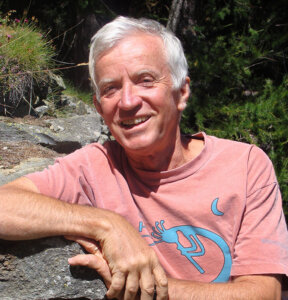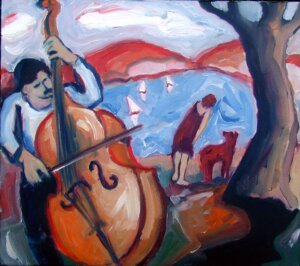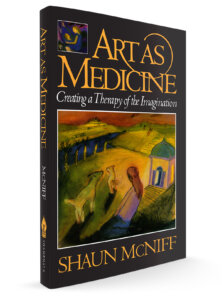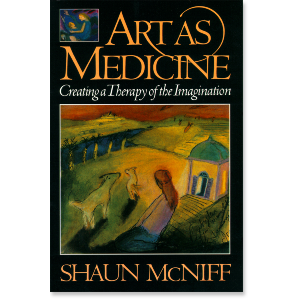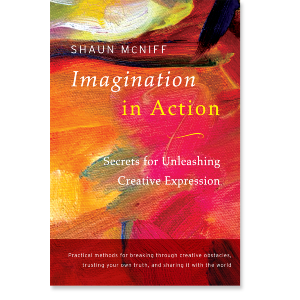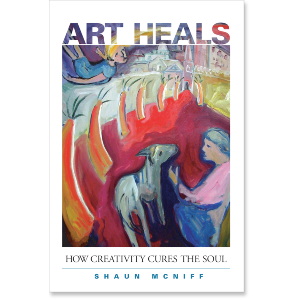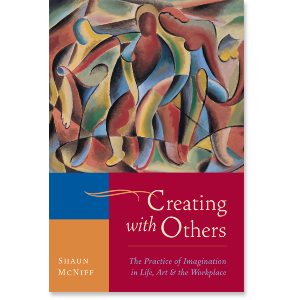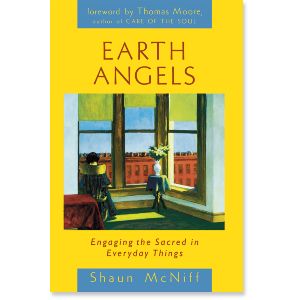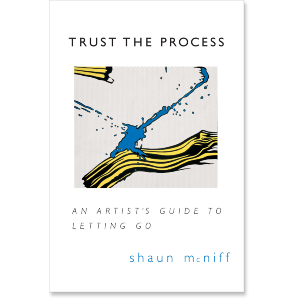WHENEVER ILLNESS is associated with loss of soul, the arts emerge spontaneously as remedies, soul medicine. Pairing art and medicine stimulates the creation of a discipline through which imagination treats itself and recycles its vitality back to daily living.
My perspective on medicine is artistic. I will not be making bioenergetic assessments of pulse beats altered by meditations on images. Although the chemistry of the body no doubt changes as a result of artistic expression and reflection, the purpose of this book is to engage them as modes of psychological inquiry. Rather than attempting to explain the artistic emanations of soul, our psychology desires to activate and move soul by striving to speak its own language.
The methods and philosophy in this book are based on principles of dialogue and interplay. Creation is interactive, and all of the players are instrumentalities of soul's instinctual process of ministering to itself. Conflict as well as affection propel the process.
Art as medicine does not restrict its interactions to human relationships. Concentration on the "other" ensouls the world, and paintings are ensouled objects or beings who guide, watch, and accompany their makers and the people who live with them. Their medicine is established by this "otherness," which enables them to influence people who open themselves to receiving help from another.
I intend this to be a practical book, based on life experiences, but not limited to descriptions of those experiences. The book is itself a "doing," an action in which soul demonstrates how it moves within the individualized yet archetypal context of a person's life. The word soul suggests the essential nature of persons and other phenomena. It is characterized by individuality, the aesthetic quality, or aura, that distinguishes one thing from another. It is also an inner movement or stirring, the force of creative animation and vitality. Soul is closely related to and sometimes synonymous with psyche, daimon, and other words that appear frequently in this text. All of these words emanate from a common mystery. Their purpose is poetic rather than explanatory, and through them the soul experiences itself more deeply. Throughout the book I will use the word image and generally refer to the visual images of dreams and pictures, but movements, sounds, poetry, enactments, and ideas are not excluded from my sense of the word.
As soon as a painting is made, or a dream remembered, the images that constitute their being are experienced as wholly other. This autonomous life of the image is the foundation of a revolutionary and pragmatic treatment of our psychic diseases. We see the dogs, automobiles, houses, and rivers in our paintings and dreams as parts of ourselves, confirming the egocentric madness of our reality. Everything is reduced to the perspective of the experiencing "I."
It is through others that we discover who we are. When we learn how to step aside and watch ourselves, the other becomes an agent of transformation. Dialoguing with images is a method for expanding ego's singular vision. In opening to others, we do not have to give away our place within the interaction. Others have an experience of us that may be quite different from our experience of ourselves. All of these perspectives are elements in the psychic stew. Reality is an ever-changing interplay and never a single, fixed position.
The dialogue between an artist and a painting is rarely limited to "twofold" communication. Many figures within the painting and the artist enter these conversations. It becomes increasingly clear that the first-person perspective of the artist, the "I" who is speaking, is composed of varied voices. On entering the world of the painting, we become aware of the many who speak through us, not just the figures in the pictures, but also the varied aspects of our thought. The articulation of these diverse "persons" is yet another aspect of image dialogue.
Virtually every person who uses art in psychotherapy believes in the ability of the image to expand communication and offer insight outside the scope of the reasoning mind. However, there are sharp distinctions in how we treat pictures once they appear. These attitudes range from approaching them as graphic signs for evaluating the mental conditions of artists, to greeting them as angels who come to offer assistance.
I view the making of art as a medicine that proceeds through different phases of creation and reflection. Although therapists and other people involved in this process make their contributions as guides and witnesses, the medicinal agent is art itself, which releases and contains psyche's therapeutic forces. The medicine offered by meditation on art is generally an infusion of imagination and awareness rather than a specific answer. "Messages" may ultimately be less significant than the engagement of images. Rather than understanding the "meaning" of the dreamer's pleasurable slide down a long pole into the darkness, we enjoy the slide and hold on to the image.
Yet artistic images encourage us to look at them and reflect upon their natures, both physical and psychological. Interpretation enters the world of the image and responds to its nature. Rather than labeling pictures from our frames of reference, we meditate on them, tell stories about how we created them, speak to them, listen to what they have to say, dramatize them through our bodily movement, and dream about them. All of these methods are dedicated to the ongoing release of art's expressive medicine. Analysis and reason make many contributions to our meditations, but they do not dominate.
Interpretive dialogue offers artists a psychology that resonates with the shaping of images. Although our emphasis here is on the personal and intimate dialogue between individual painters and their pictures, the same principles can be applied to "public" art. Inner dialogue and meditation enable a person to establish a private relationship with any art object. This mode of interpretation can be likened to Henry Corbin's vision of "creative prayer" as an "intimate dialogue" between two beings who depend upon one another and whose interaction leads to "new creations."
Since every aspect of art contributes to its medicine, we do not assume that some expressions heal and others do not. Negative and disturbing images are vital stimulants for healing in that the toxin is the antitoxin. Art's medicine trusts spontaneous expression and avoids prescriptions-bright colors to cure depression, heroic figures to conquer fear, good energies to overwhelm bad. The grotesqueness of Bosch's underworld is welcomed together with the serenity of Monet's water lilies. Creative expression of the soul's aberrations gives them the opportunity to affirm rather than threaten life.
Paradoxically, it is the particulars of ordinary life that open to archetypal existence. The only way to soul's authentic and firsthand movement is through the medium of our most personal materials endowed with archetypal significance.
$24.95 - Paperback
